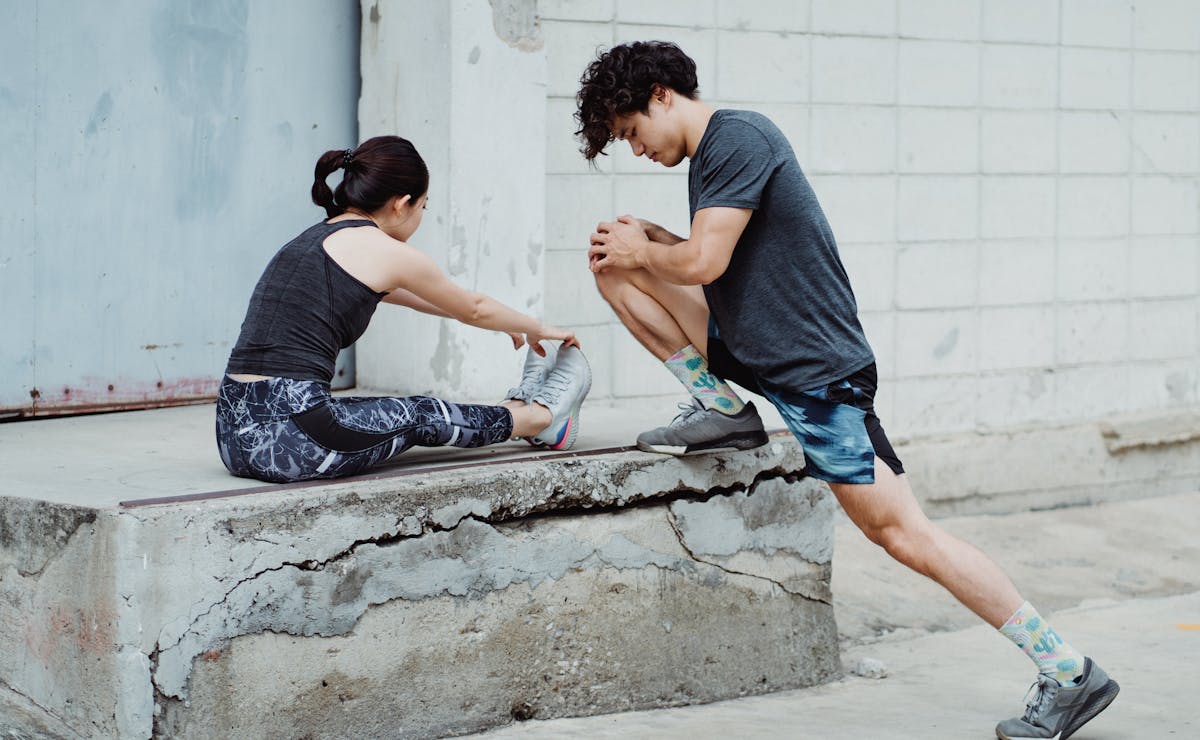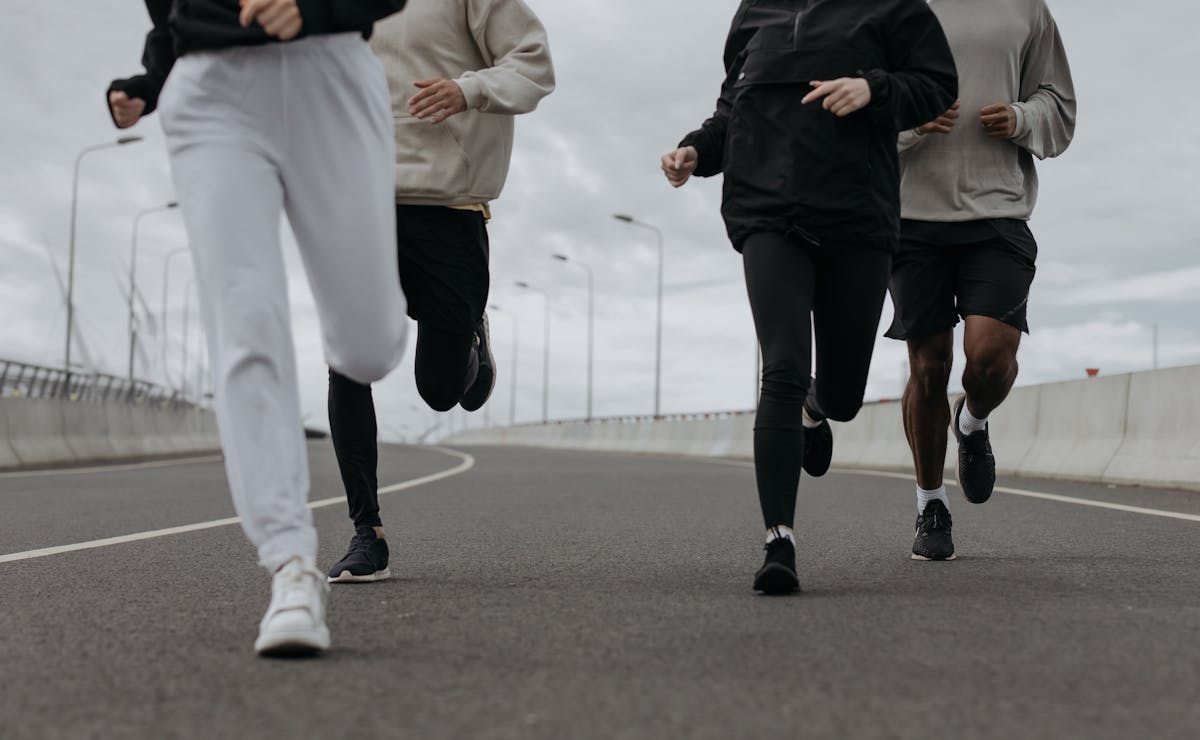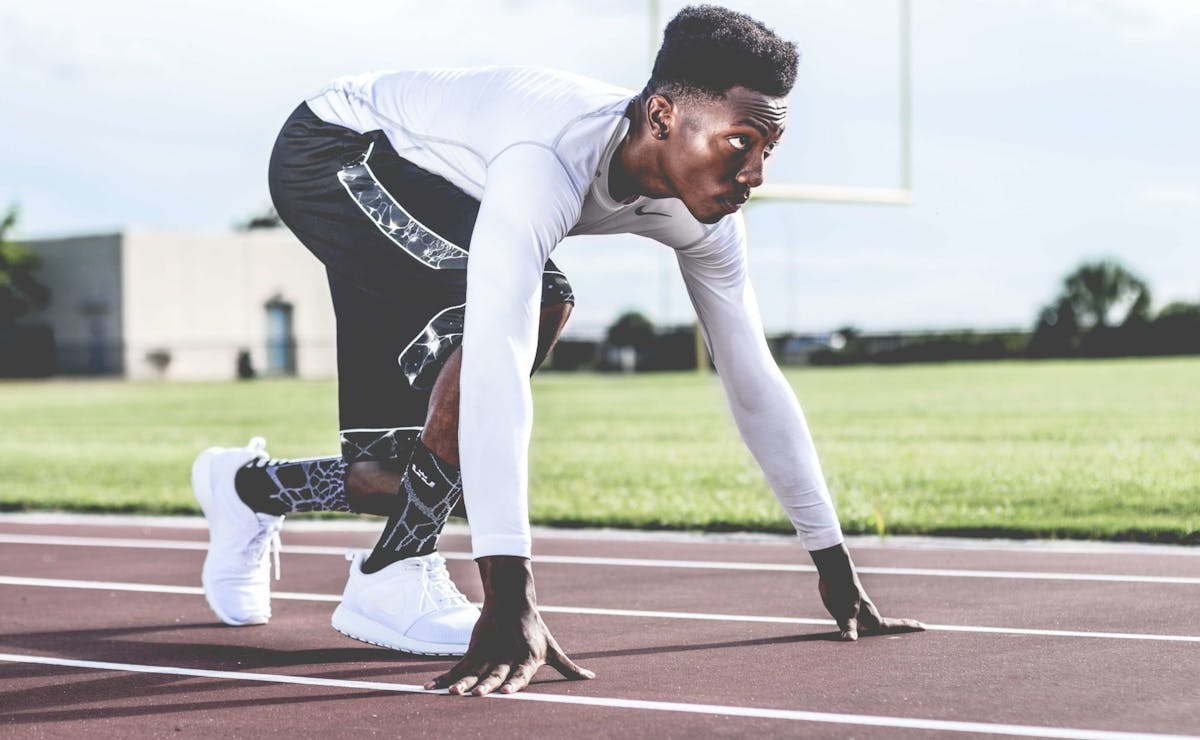To warm up before jogging, do dynamic and instructive activities like walking quickly, doing circular movements with your ankles and hips, running in place, and beginning with a light intensity.
And don’t stretch, okay? What your body needs before running is to warm up . Many people “mix things up” and prioritize stretching and forget to warm up, which only favors injuries and harms your practice.
After all, not preparing your body beforehand is like running with your shoelaces untied: your performance will be compromised and there is no guarantee that you won’t end up injured. A warm-up routine will get your body ready for the many kilometers ahead.
This content was prepared with care to show you the importance of this preparation and also to present you with a 10-minute warm-up plan. Check it out!
First of all: what is the purpose of warming up when running?
Through increased blood circulation and muscular warmth, warming up prepares your body for exercise. Worksouts that increase performance but lower your chance of injury include light jogging, jumping jacks, and joint exercises.
Just look at your body before you run: it is at rest and all of its muscles are relaxed. Warming up bridges the gap between rest and the effort of running , preparing all of your muscles for the impact of the activity.
This is why it essentially comprises of doing physical activities comparable to those used in training but at a lesser intensity.
Common question: what is the difference between warming up and stretching?
Many people think these two terms are the same thing, but they differ in very broad ways.
- Warming up: prepares the body for physical activity, activates the cardiovascular system and reduces the risk of injury.
- Stretching: increases muscle flexibility and range of motion, reduces muscle tension and aids post-workout recovery.
Do you see how one thing prepares and the other recovers? That’s because there is an order to how they happen.
What to do first: warm up, stretch or run?
The most recommended order is:
- Warm up
- Run
- Stretch
That said, no stretching before running, only after training, okay? Warming up is mandatory for runners, and not just when it’s cold, okay?
How to warm up before running training?
Ideally, you should warm up for 10 to 15 minutes before you start running, “starting the engine” for the main event, and dynamic warm-up is one of the main strategies for arriving at the right time for exercise: it consists of doing the activity itself at a slower pace, such as starting the workout with a walk and gradually gaining speed.
Drills or educational exercises – specific exercises that improve technique through fundamental aspects such as posture, cadence , mobility, coordination and strength – are also great for warming up the body and mastering the sport’s movements.
In addition to this, there are other essential practices that you can include in your routine to enjoy all the benefits of running !
8 Running Warm-Up Exercises You Can’t Skip
The warm-up exercises below take only 10 minutes to perform and are both dynamic and educational. Check them out!
| Exercise | Time | How to do it |
|---|---|---|
| 1. Light trot | 2 minutes | Walk at a brisk pace or jog lightly to activate circulation and increase body temperature. |
| 2. Rotation of ankles and hips | 1 minute | Make circular movements with your ankles and hips to loosen your joints. Do each side and limb for 15 seconds and alternate. |
| 3. Medium Skipping | 1 minute | Run in place, raising your knees to mid-thigh height and keeping your arms active. |
| 4. Heel to glute | 1 minute | Run in place, trying to touch your heels to your glutes. |
| 5. Lunge | 1 minute | Take a long step forward and lower your back knee almost to the floor while bending your front knee to 90 degrees. Alternate sides. |
| 6. Lateral displacement | 1 minute | Take quick sideways steps with your knees semi-flexed, going from one point to another for 1 minute. |
| 7. Tiptoe jump | 1 minute | Do small, quick jumps on your toes to activate the muscles in your ankles and calves. |
| 8. Progressive running | 2 minutes | Start at a slow pace and gradually increase the speed until you reach your training pace. |



